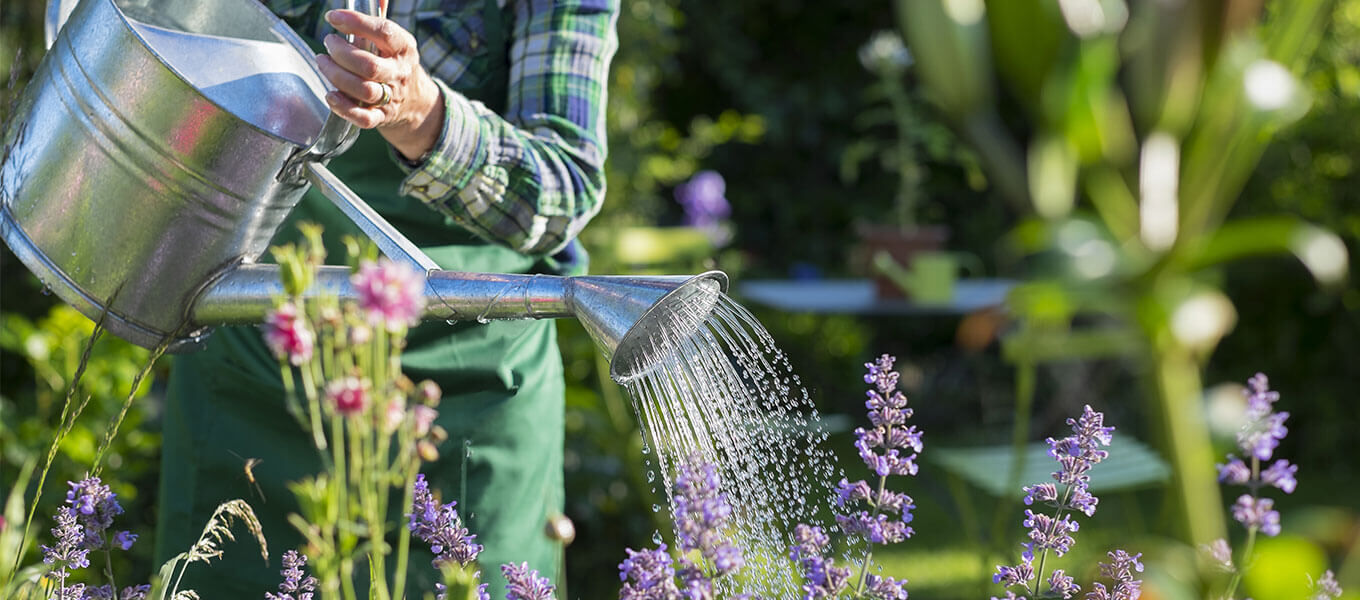
Sustainable garden watering for summer
Summertime is garden time. The flowers are blooming and the vegetables are growing. But the high temperatures present us with a challenge: how do I water my garden properly? In this article, we would like to give you practical tips on how to water your garden efficiently and sustainably in summer. In addition to preserving the plants in the garden, we are also concerned about the responsible use of water.
Water requirements of plants
Different types of plants grow in our garden with different water requirements. Understanding the needs of your plants can help you use water more efficiently and ensure that your plants are optimally supplied.
Drought-tolerant plants such as succulents and Mediterranean species, for example, have developed adapted mechanisms to manage with little water. They store moisture in their leaves and roots and can survive longer periods of drought.
In contrast to succulents, most perennials, vegetable plants and flowers require evenly moist soil, as they often react sensitively to dry soil. Aquatic plants or moisture-loving woody plants naturally require constantly moist soil or even water in the form of ponds or swamp beds.
By watering your plants according to their specific needs, you can reduce water consumption and ensure that each plant receives the right amount of water to grow healthily and survive the hottest periods of summer.
Which flowers and plants are particularly water-efficient?
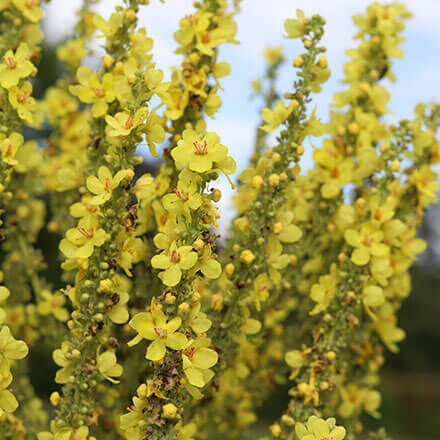
Mullein (Verbascum)
This impressive plant with its tall, candle-shaped inflorescences is not only an attractive addition to your garden, but is also extremely drought-resistant. Mullein thrives in full sun and well-drained soil and can withstand long periods of drought if only watered occasionally. Another special feature is that mullein tends to flower in dry soil.
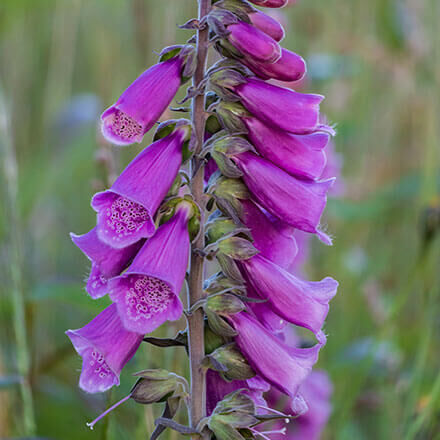
Foxglove (Digitalis)
With its characteristic bell-shaped flowers, the foxglove is a popular choice for semi-shady areas in the garden. The plant requires little water and can even survive longer periods of drought. However, do not allow the foxglove to dry out, but water it from time to time to ensure sufficient moisture.
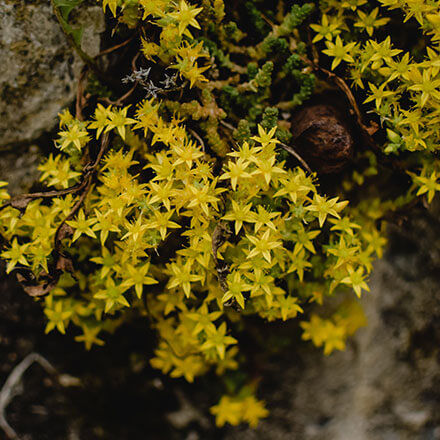
Stonecrop (Sedum)
The stonecrop is a robust succulent that requires little water and forms an attractive carpet of thick, fleshy leaves. The plant is very drought tolerant and is well suited to sunny locations. It stores moisture in its leaves and only needs to be watered occasionally. The name of wall pepper refers to the peppery flavour that is released when the leaves are chewed.
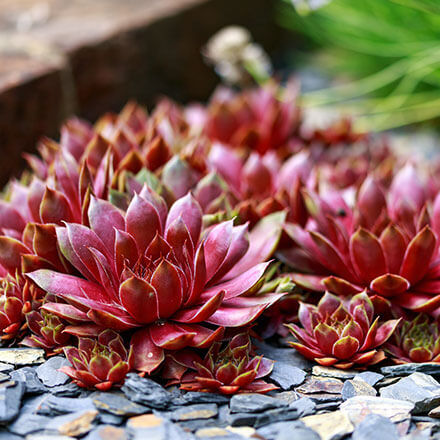
Houseleek (Sempervivum)
The houseleek is another succulent that is ideal for a water-saving garden. This plant forms rosettes of thick, fleshy leaves and can survive long periods of drought. It only needs occasional watering and prefers sunny locations.
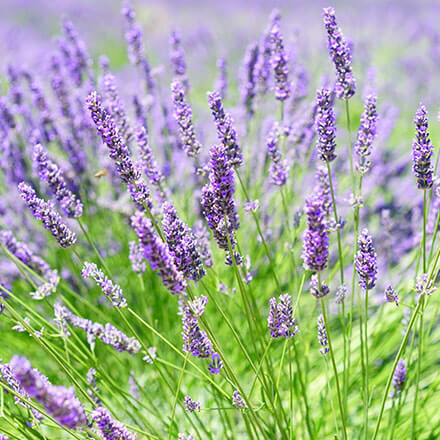
Lavender (Lavandula)
Lavender is not only known for its beguiling fragrance, but also for the fact that it requires little water. The perennial plant prefers sunny locations and well-drained soil. Lavender only requires occasional watering and is an excellent choice for dry and Mediterranean gardens.
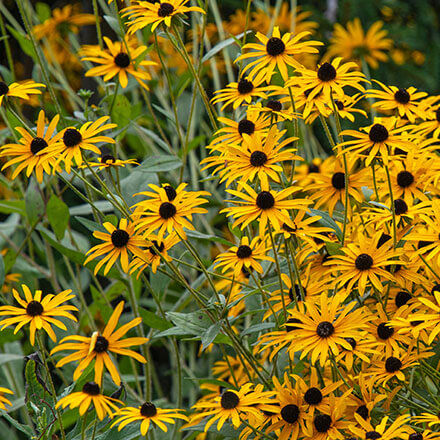
Coneflower (Rudbeckia)
Rudbeckias, also known as coneflowers, are robust perennials with bright yellow flowers. The plants are drought-tolerant and can survive longer periods of drought. They prefer sunny locations and well-drained soil.
How do I water properly?
1. time of watering
It is best to water the garden in the early morning or late evening hours when the sun is not too strong. This minimises evaporation and allows the water to penetrate the soil effectively. Avoid watering during the hot midday hours to prevent evaporation.
2. water selectively
When watering, concentrate on the root area of the plants. This is the area around the stem where most of the supply roots are located. Avoid spraying directly onto leaves or flowers as this can lead to disease, evaporation and even burns.
3. control of soil moisture
Check the soil moisture regularly to make sure you are not giving too much or too little water. To do this, stick your finger into the soil to feel whether it is moist or dry. If soil sticks to your finger, it is moist enough and no watering is required. Alternatively, moisture meters or soil sensors can also be used.
4. mulch the soil
Mulching is a good way to retain moisture in the soil and reduce weed growth. Cover the soil around your plants with a layer of organic material such as bark mulch. This reduces evaporation and keeps the soil moist for longer. When mulching, it is better to use too little than too much, a mulch layer of up to 10 cm is ideal.
5. collect rainwater
How important is the soil for water storage?

Healthy and fertile soil plays a crucial role in watering gardens, especially during the hot summer months. But why is soil so important? Only a well-structured soil can store water efficiently and make it available to plants when they need it most.
A loose soil structure with sufficient organic matter allows water to penetrate better and reduces the risk of water seepage. This means that we waste less water and our plants are optimally nourished at the same time. It is therefore important to keep our soil healthy and regularly enrich it with organic matter to improve its water retention capacity. Through this sustainable practice, we can reduce our water consumption and conserve valuable resources. At the same time, we promote the ecological balance in our garden and ensure healthy and resilient plants.
How do I water my garden on holiday?
Summer is the main holiday season for many people. But while we are looking forward to a well-deserved holiday, the question arises as to how my plants will be supplied with water while I am away. Installing automatic irrigation systems is a particularly safe way of ensuring a water supply even when you are away. Watering systems can be connected to a timer that automatically controls the watering.
However, a sustainable method is still to ask neighbours, friends or relatives to look after the garden while you are away. You can explain to them exactly how often and how much water the plants need. This is not only environmentally friendly, but also gives you a clear conscience knowing that your garden is in the hands of someone you know. Don't forget to thank them for their help with a small gift!
















